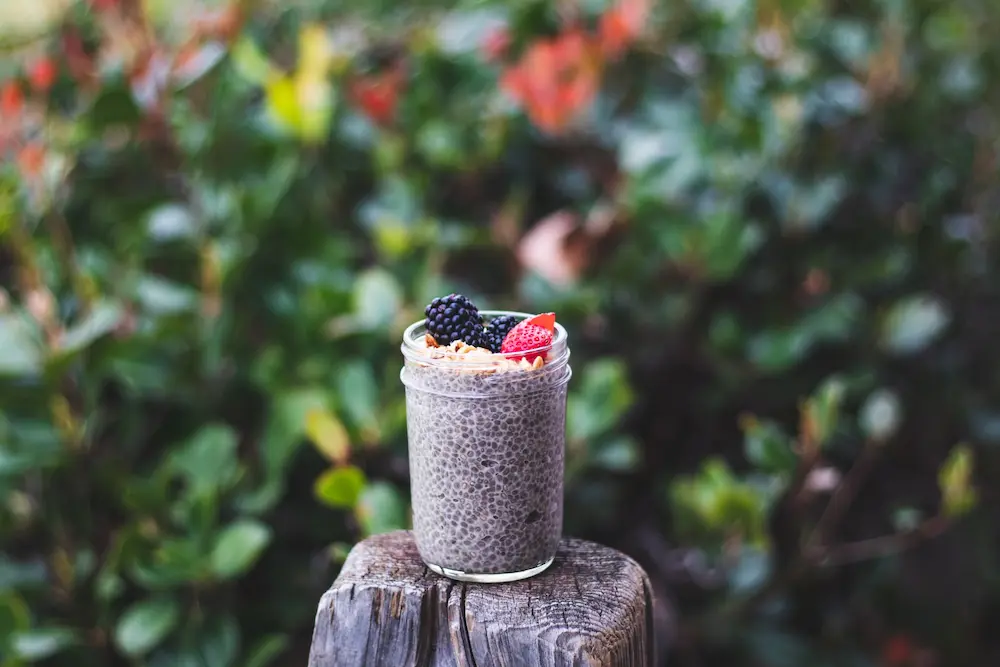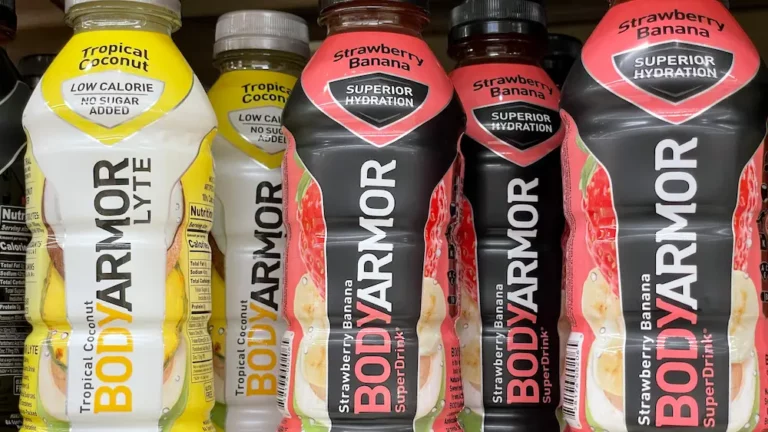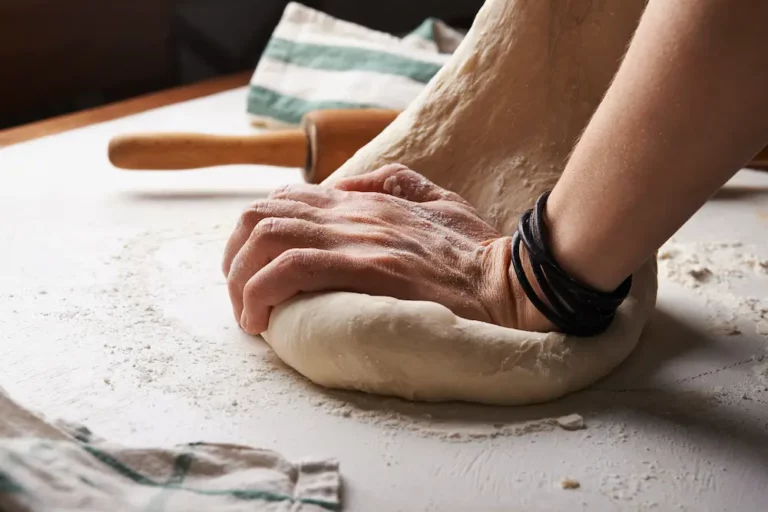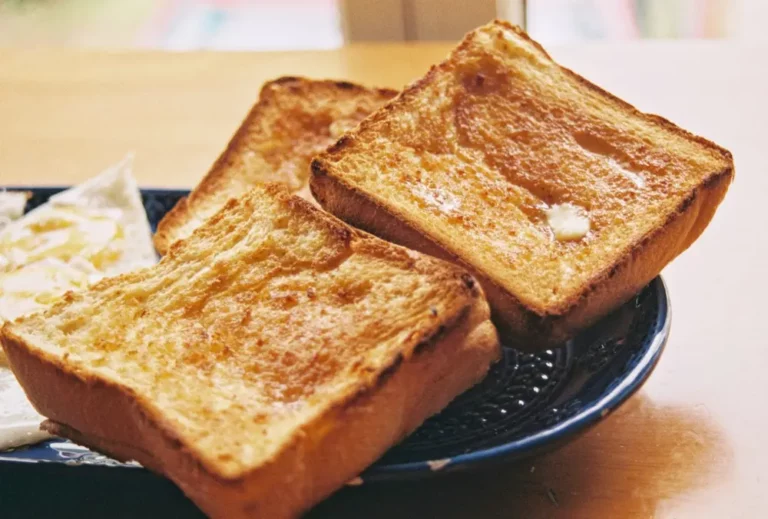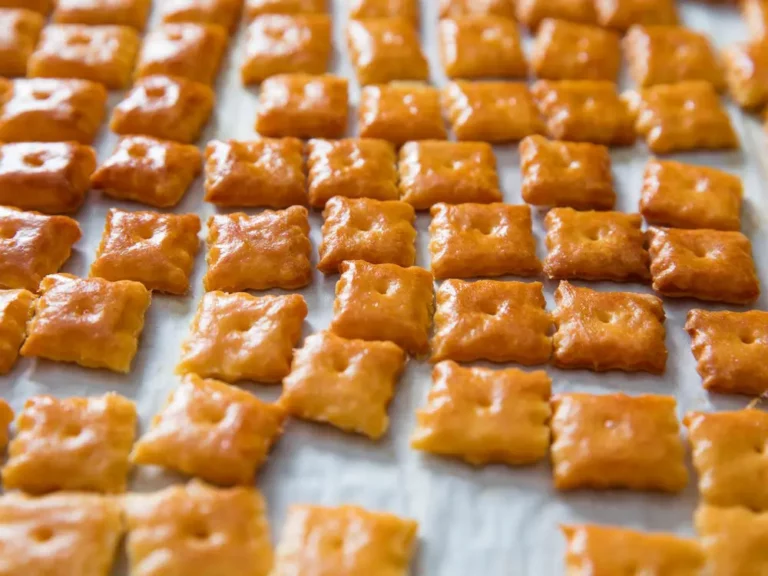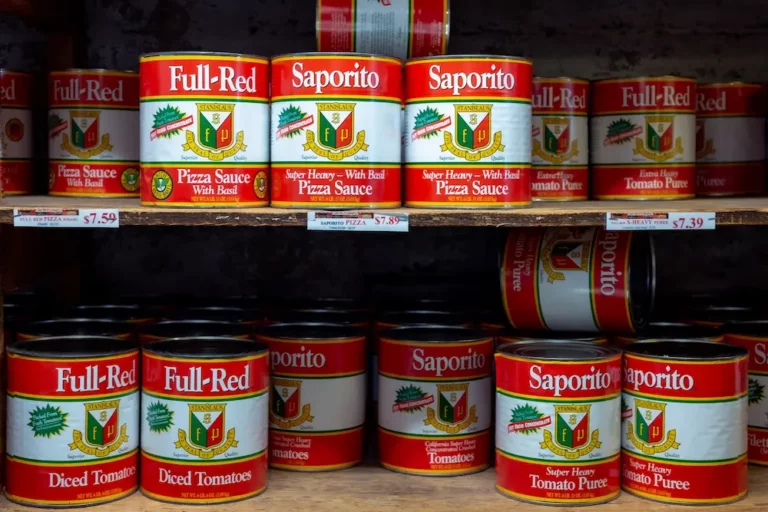Why Is My Chia Pudding Runny? Tips to Thicken Your Delicious Breakfast
As a chia pudding lover, nothing is more frustrating than preparing a batch of the creamy, nutritious breakfast or snack only to find it runny. But why does this happen? After conducting some research, I have discovered a few reasons why your chia pudding might not be turning out as thick and creamy as you’d like.
One possible reason for runny chia pudding is not using enough chia seeds. Chia seeds are hydrophilic, meaning they absorb water and expand to form a gel-like consistency. If you don’t use enough chia seeds, the pudding may not have enough gel-like texture to hold its shape. Another possibility is that you are not allowing enough time for the chia seeds to absorb the liquid. Chia pudding needs at least a few hours in the fridge to fully set and thicken.
Understanding Chia Pudding
Chia pudding is a delicious and healthy breakfast or snack option that has gained popularity in recent years. It’s a simple dish made by soaking chia seeds in liquid until they absorb the liquid and become a pudding-like consistency. However, sometimes the pudding can turn out to be runny instead of creamy. In this section, I will explain what chia pudding is and why it can turn out runny.
What is Chia Pudding?
Chia pudding is made by mixing chia seeds with a liquid such as almond milk, coconut milk, or water. Chia seeds are tiny black or white seeds that come from the Salvia hispanica plant. They are high in fiber, protein, and omega-3 fatty acids, making them a healthy addition to any diet.
When chia seeds are mixed with liquid, they absorb the liquid and become gelatinous, creating a pudding-like consistency. The longer the seeds soak, the more liquid they absorb, and the thicker the pudding becomes.
Why is my chia pudding runny?
There are several reasons why your chia pudding may turn out runny instead of creamy:
- Not enough chia seeds: If you don’t use enough chia seeds, the pudding will not thicken properly. The general rule of thumb is to use 3-4 tablespoons of chia seeds per cup of liquid.
- Not enough soaking time: Chia seeds need time to absorb the liquid and thicken up. If you don’t give them enough time, the pudding will be runny. The minimum soaking time is 2 hours, but overnight is best.
- Not enough liquid: If you don’t use enough liquid, the chia seeds won’t have enough liquid to absorb, and the pudding will be runny. The general rule of thumb is to use 1 cup of liquid per 3-4 tablespoons of chia seeds.
- Using the wrong type of liquid: Some liquids, such as fruit juice or coffee, may not thicken chia seeds as well as milk or water. Stick to milk or water-based liquids for best results.
- Not stirring enough: Chia seeds tend to clump together, so it’s important to stir the mixture frequently to prevent clumping and ensure even absorption of the liquid.
By understanding what chia pudding is and why it can turn out runny, you can make adjustments to your recipe and create a delicious and creamy chia pudding every time. Chia pudding, when prepared to a creamy consistency, is easier to digest, similar to how oatmeal has a varied digestion time depending on its preparation.
Why is Your Chia Pudding Runny
I love chia pudding, but sometimes it can be frustrating when it turns out runny instead of creamy. I did some research and found out a few reasons why this might be happening.
Not Enough Chia Seeds
One of the most common reasons for runny chia pudding is not using enough chia seeds. Chia seeds absorb a lot of liquid, so if you don’t use enough, your pudding will be too thin. A good rule of thumb is to use a ratio of 1:3 chia seeds to liquid. For example, if you’re using one cup of liquid, use 1/3 cup of chia seeds.
Not Letting it Sit Long Enough
Another reason your chia pudding might be runny is that you’re not letting it sit long enough. Chia seeds need time to absorb the liquid and thicken up. It’s best to let your pudding sit in the fridge for at least 3 hours, but overnight is even better. If you’re in a rush, you can try adding more chia seeds to speed up the thickening process.
Not Stirring Enough
If you’re not stirring your chia pudding enough, you might end up with clumps of chia seeds that haven’t absorbed any liquid. Make sure to stir your pudding well before putting it in the fridge, and then give it another stir after an hour or so. This will help break up any clumps and ensure that all the chia seeds are evenly distributed.
Using the Wrong Liquid
Finally, using the wrong type of liquid can also result in runny chia pudding. Chia seeds work best with thicker liquids like coconut milk or almond milk. If you use a thinner liquid like regular milk or water, your pudding might not thicken up properly. You can also try adding a thickener like yogurt or mashed banana to help thicken your pudding.
By keeping these tips in mind, you should be able to avoid runny chia pudding and enjoy a delicious and creamy treat every time!
Importance of Chia Seed to Liquid Ratio
When it comes to making chia pudding, getting the right ratio of chia seeds to liquid is crucial. In this section, I will discuss the importance of this ratio and its effects on the texture of your pudding.
Choosing the Right Ratio
The standard ratio for chia pudding is 1:3, which means one part chia seeds to three parts liquid. However, this ratio can be adjusted based on personal preference and the type of liquid used. For example, if you prefer a thicker pudding, you can use a 1:2 ratio. On the other hand, if you like a more liquid consistency, you can use a 1:4 ratio.
It’s important to note that the type of liquid used can also affect the ratio. For example, thicker liquids such as coconut milk or yogurt may require fewer chia seeds, while thinner liquids such as almond milk or water may require more.
Effects of Too Much Liquid
If you use too much liquid in your chia pudding, it can result in a runny consistency. This is because the chia seeds will not be able to absorb all of the liquid, causing them to remain suspended in the mixture. Additionally, too much liquid can dilute the flavor of the pudding and make it less satisfying.
To avoid a runny consistency, it’s important to measure your ingredients carefully and adjust the ratio as needed. If your pudding is still too runny after the initial mixing, let it sit for a few hours to allow the chia seeds to fully absorb the liquid. You can also add additional chia seeds to thicken the mixture.
In summary, getting the right ratio of chia seeds to liquid is crucial for achieving the perfect texture in your chia pudding. By choosing the right ratio and avoiding too much liquid, you can ensure a delicious and satisfying breakfast or snack.
Role of Time in Chia Pudding Consistency
Immediate Effects
When making chia pudding, time plays a crucial role in determining its consistency. Chia seeds absorb liquid and form a gel-like texture over time. Therefore, if you eat the pudding immediately after making it, it will be runny and not set.
To achieve a thicker consistency, it’s best to let the chia pudding sit in the fridge for at least 6-8 hours or overnight. This will give the chia seeds enough time to absorb the liquid and create a thick, creamy texture.
Long Term Effects
While immediate effects are important, the long-term effects of leaving chia pudding in the fridge for too long can also affect its texture. Over time, the chia seeds will continue to absorb liquid and the pudding can become too thick and gelatinous.
To avoid this, it’s best to consume the chia pudding within 2-3 days of making it. If you plan to make a large batch, store it in separate containers and only take out what you plan to eat each day.
In summary, time is a critical factor in achieving the perfect consistency for chia pudding. Give it enough time to set in the fridge, but be mindful of leaving it for too long. By following these simple tips, you can enjoy a delicious and creamy chia pudding every time!
Influence of Ingredients on Chia Pudding Consistency
Chia pudding is a delicious and nutritious breakfast or snack option. However, it can be frustrating when your chia pudding turns out to be runny instead of creamy. The consistency of chia pudding depends on several factors, including the type of liquid used, sweeteners, and other additives.
Effects of Dairy
Dairy products such as milk, cream, and yogurt can be used as a base for chia pudding. However, the amount of dairy used can affect the consistency of the pudding. Using too much dairy can result in a runny pudding, while using too little can make the pudding too thick.
To achieve a creamy and smooth consistency, it is recommended to use a 1:3 ratio of chia seeds to dairy. For example, 1/4 cup of chia seeds to 3/4 cup of milk. It is also important to use a dairy product that is high in fat, such as whole milk or heavy cream, to achieve a creamier texture.
Impact of Sweeteners and Additives
Sweeteners and additives can also affect the consistency of chia pudding. Sweeteners such as honey, maple syrup, and agave nectar can add flavor and sweetness to the pudding but can also make it runnier.
To avoid a runny pudding, it is recommended to use a small amount of sweetener, such as 1-2 tablespoons per cup of liquid. It is also important to mix the sweetener with the liquid before adding the chia seeds to ensure even distribution.
Additives such as fruit, nuts, and granola can also impact the consistency of chia pudding. Adding too much fruit can make the pudding watery while adding too many nuts or granola can make it too thick.
To avoid a runny or lumpy pudding, it is recommended to add the additives after the chia seeds have fully absorbed the liquid and the pudding has set. It is also important to use a small amount of additives, such as 1/4 cup per cup of liquid, to avoid affecting the consistency of the pudding.
Overall, the consistency of chia pudding depends on several factors, including the type and amount of liquid used, sweeteners, and additives. By following the recommended ratios and adding ingredients carefully, you can achieve a creamy and delicious chia pudding every time.
How to Fix Runny Chia Pudding
If you’re a fan of chia pudding, you know that it’s a delicious and healthy breakfast or snack option. However, it can be frustrating when your chia pudding turns out to be runny instead of creamy. Don’t worry, though, because there are a few simple fixes to get your chia pudding back on track.
Adding More Chia Seeds
One of the most common reasons that chia pudding turns out runny is that there aren’t enough chia seeds in the mixture. Chia seeds absorb liquid and expand, which is what gives the pudding its thick, creamy texture. If your chia pudding is too runny, try adding more chia seeds.
To do this, simply mix in an additional tablespoon or two of chia seeds and let the mixture sit for 10-15 minutes. If the pudding is still too runny, add more chia seeds and repeat the process until you achieve the desired consistency.
Reducing Liquid Content
Another common reason for runny chia pudding is that there is too much liquid in the mixture. If you’re using a recipe that calls for a specific amount of liquid, try reducing it slightly to see if that helps.
Alternatively, you can use less liquid from the start. For example, if a recipe calls for one cup of milk, try using 3/4 cup instead and see how the pudding turns out. You can always add more liquid later if needed.
Adjusting Ingredients
Finally, if your chia pudding is still too runny after adding more chia seeds and reducing the liquid content, you may need to adjust the other ingredients in the recipe. For example, you could try adding more yogurt or nut butter to thicken the mixture.
Another option is to add a thickening agent such as cornstarch or arrowroot powder. Simply mix a small amount of the thickener with a small amount of liquid to form a paste, then add it to the chia pudding mixture and stir well.
In conclusion, if your chia pudding turns out runny, don’t despair! With a few simple tweaks, you can get your pudding back to its thick, creamy goodness in no time.
Preventing Runny Chia Pudding in the Future
As a chia pudding lover, I know how frustrating it can be when your pudding turns out runny instead of creamy. But fear not, there are a few simple steps you can take to prevent this from happening in the future.
Use the Right Ratio of Chia Seeds to Liquid
One of the most common reasons for runny chia pudding is using too little chia seeds or too much liquid. The general rule of thumb is to use a ratio of 1:3 or 1:4 chia seeds to liquid. For example, if you’re using 1/4 cup of chia seeds, you should use 1 to 1 1/2 cups of liquid. Keep in mind that different liquids may require slightly different ratios, so adjust accordingly.
Stir Frequently
Stirring your chia pudding frequently can help prevent clumps of chia seeds from forming and ensure that the seeds are evenly distributed throughout the liquid. This will also help the chia seeds absorb the liquid more evenly, resulting in a creamier texture.
Let it Sit for Longer
Chia seeds need time to absorb the liquid and thicken up, so letting your pudding sit in the fridge for at least a few hours (or overnight) is essential. If you’re in a rush, you can try blending the mixture for a few seconds to help speed up the thickening process.
Experiment with Different Liquids
While most chia pudding recipes call for almond milk or coconut milk, you can experiment with different liquids to achieve different textures and flavors. For example, using yogurt or kefir instead of milk can result in a thicker, creamier pudding. Just keep in mind that different liquids may require different ratios of chia seeds to liquid.
By following these simple tips, you can prevent runny chia pudding and enjoy a creamy, delicious breakfast or snack every time.

